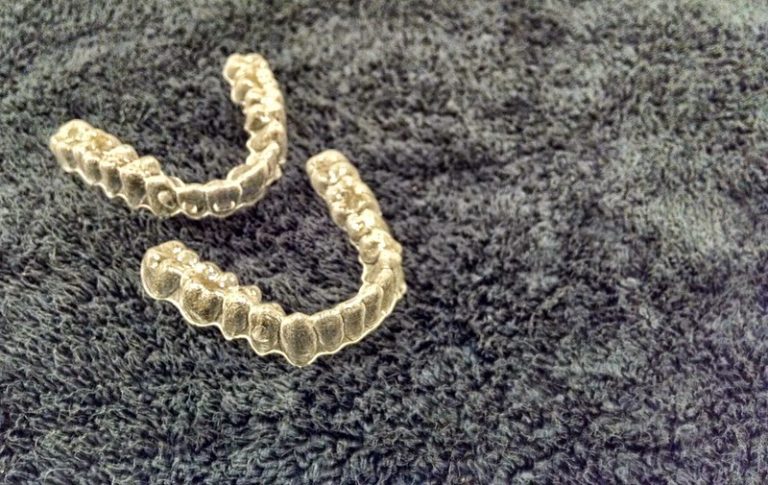
If you’ve ever had braces, you know that the frequent in-office visits can be a hassle and time-consuming. Braces can also be very expensive. Invisalign is quicker, less expensive, and less intense than traditional braces. But aligners still pose some challenges, especially if you’re concerned about visiting a dental office during the pandemic.
That’s why many companies are now offering an at-home version of braces.

After Invisalign® treatment rose in popularity, companies began selling at-home aligning kits. You send in photos of your teeth, and they will send you aligners in the mail. An at-home process sounds like a dream, right? No appointments, traveling or sitting in waiting rooms. But what you might not know is that these at-home teeth straightening kits can be doing more bad than good.
How Do At-Home Braces Work?
Similar to Invisalign treatment, your teeth are straightened using clear aligners. You’ll start the treatment with one set of aligners and gradually change them, shifting your teeth and, theoretically, giving you a perfect and straight smile. But we’ve found that it doesn’t always work out that way, and many have experienced migraines and jaw issues.
The Risks of At-Home Aligners
When you receive a set of braces or aligners at a traditional dental or orthodontic office, a dental professional will take X-rays and multiple scans of your jaw and teeth. Without this detailed information, your aligners may not be the right fit, causing problems.
The at-home version is missing this critical step. While you send in photos, reports indicate that a dentist may or may not actually review those.
According to the president of the American Dental Association, Chad Gehani, “A proper diagnosis cannot be done by a picture of teeth. An examination is needed to detect things like cavities, shortened roots, and gum disease, which could lead to problems.”
Additionally, the American Dental Society and the American Association of Orthodontists discredit and discourage the use of online aligners.
Gum health is also an important factor. During your in-person checkups, your dentist or orthodontist will check your gum health to ensure aligners aren’t leading to hygiene problems.
Another aspect that many don’t think about before trying DIY braces is a dental emergency. You won’t have a physical location to visit if something goes wrong, and your dentist won’t have all of the answers because they didn’t give you the treatment. Having a dentist you can reach and visit in regards to your treatment is so important, and at-home braces just don’t hit the mark.
We know that many people are pleased with the look of their new smile after using at-home braces, but they are not the teeth straightening option we recommend. Braces or Invisalign treatment are a significantly smarter and safer way to go, and your teeth will be under the close supervision of a dentist.
Don’t take the risk of trying at-home braces. Contact the Dental Care Center team to schedule an appointment for a new straight smile.